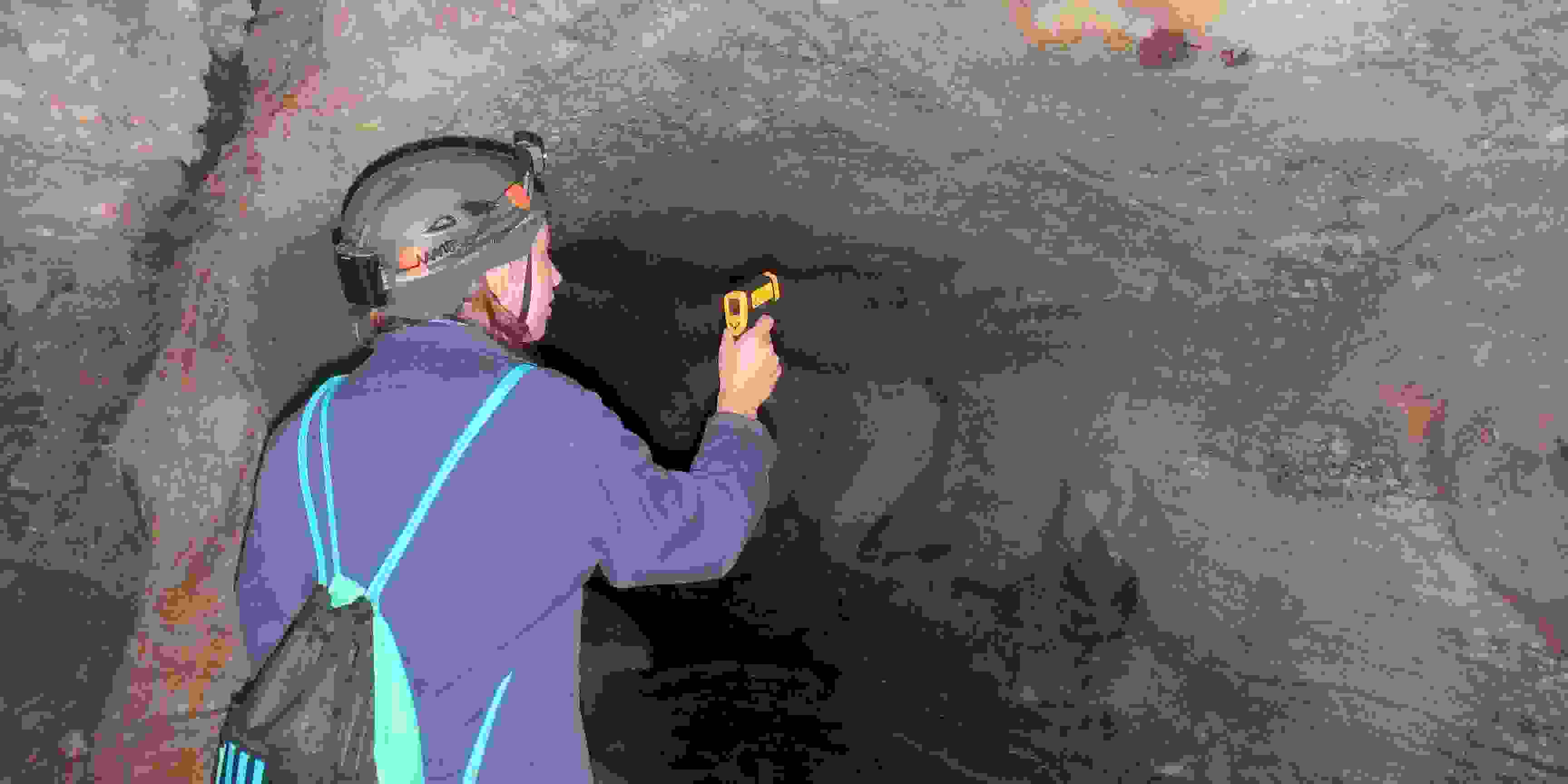The Texas A&M Institute of Renewable Natural Resources (IRNR) bat research team is asking for help from citizens in its efforts to document bat populations in Texas.
The institute’s Bat and Hibernacula Surveys team is conducting surveys of wintering bats and their roosts throughout Texas to get baseline numbers in anticipation of white-nose syndrome appearing in the state, said Melissa Meierhofer, an IRNR research associate.
“White-nose syndrome is a deadly, cold-adapted fungal disease that affects hibernating bats,” she said. “It has already caused catastrophic bat losses in the eastern United States, and it is projected to come to Texas in the next few years.
“It is important to obtain accurate bat population distribution and abundance data and characterize suitable habitats where the fungus could appear before the disease arrives so the state will be more ready to manage the disease.”
Meierhofer said while the team is constantly traveling to different parts of the state, it cannot cover all locations.
“So we are asking individuals who may know of bat roosting locations to help us by filling out a form,” she said.
The form is available online.
“By providing information for any bat seen between December 2016 and March 2017, individuals can help us document which bat species are overwintering in the state, and in what part of Texas they can be found,” she said.
Meierhofer asked individuals to fill in as little or as much of the information as they can.
“If possible, individuals should provide a photograph of both the bat and the location,” she said. “Photo documentation will help provide support for species identifications on all bats observed.”
Those with completed forms should send them to Meierhofer by email at mbm030@tamu.edu or by mail to Texas A&M Institute of Renewable Natural Resources, 1500 Research Parkway, Suite A110, College Station, TX 77843-2260.
Meierhofer said the team is also asking any landowners who have caves on their property to contact the team directly if they would be willing to allow the team on their property to survey the caves.
To date, the team has surveyed 49 winter sites and visited a total of 165 sites, including caves, bridges, culverts, abandoned buildings and tunnels throughout the state, with help from the Texas Park and Wildlife Department, the Texas Cave Management Association, the Texas Department of Transportation and private landowners.
The team has swabbed and visually assessed more than 100 bats for signs of the syndrome, Meierhofer said, and so far all have tested negative for fungal spores and appeared healthy.
Maintaining healthy bat populations is critical, particularly for the agriculture industry because certain bat species eat insects that can harm crops, Meierhofer said.
“The destruction of crops without these bats could be pretty big. Bats are worth more than $1 billion to the corn crop industry, for example,” she said. “Without healthy populations, you’re going to notice an increase in insects and with that could also come an increase in diseases.
For more information about the IRNR project, visit its Facebook page.


